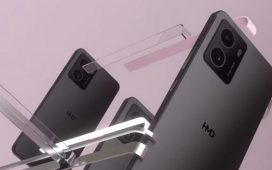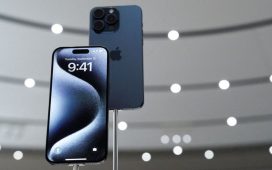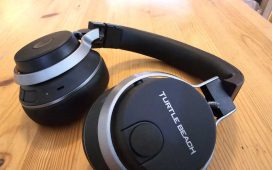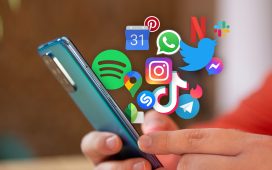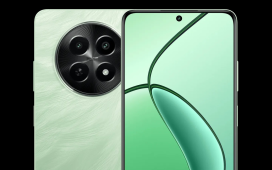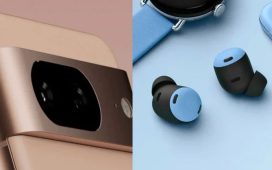There probably isn’t much you don’t know about the iPhone 15 and 15 Plus. Much like the iPhone 14 and 14 Plus, the iPhone 15 models repackage many, but not all, of the features found in last year’s Pro lineup at a lower price. There’s the Dynamic Island instead of a notch, a higher-resolution 48-megapixel camera, the A16 Bionic processor pulled from the iPhone 14 Pro, and an all-new USB-C port in place of the Lightning connector.
But the $799 iPhone 15 or $899 iPhone 15 Plus isn’t for the person who is cataloging every spec and feature difference year after year. It’s not for the person demanding the absolute best camera, most cutting-edge processor, and fanciest design; that person should just buy the iPhone 15 Pro or 15 Pro Max.
The regular iPhone 15 (or 15 Plus if you want a bigger screen) is the phone for you if you have a three- or four-year-old iPhone 12 or 11 (or even older) that isn’t keeping up anymore or has a brutally cracked screen. Or maybe you’re a teenager getting your first phone that’s not a hand-me-down from your parents or older siblings. You use your phone as a tool for communication, for entertainment, for social media, for taking photos, and for all of the other things in modern life that dictate we need a smartphone, but you don’t need the most expensive device to do those things. You are going to find a lot of new things and a lot to like in the iPhone 15 or 15 Plus.
I won’t say the iPhone 15 or 15 Plus are the right phones for most people — Apple continues to sell a lot of Pro models every year, even at their higher prices. There are reasons for that: I was hoping to see Apple bring its Pro-level display features like high refresh rates and always-on screens to the standard line this year, and that didn’t happen.
Complicating the matter is the fact that Apple is still selling the iPhone 14 and 14 Plus for $100 less than the iPhone 15 models. Contrary to last year, I think there are enough improvements here over the iPhone 14 generation to justify springing for the iPhone 15 — you get a better camera, the Dynamic Island, and more convenient charging. But I know there are a lot of people who will just go for the cheapest iPhone they can get and be perfectly happy with it. (Apple will also sell you an iPhone 13 from two years ago if you want to save even more money.)
Overall, and obviously, the iPhone 15 and 15 Plus are good, if not excellent, phones. (That’s kind of inevitable when we’re on the 15th generation of a device, but I digress.) But they aren’t interesting or pushing the envelope in any way, and I don’t think Apple will ever use this model for that purpose. Instead, the iPhone 15 and 15 Plus are dependable, reliable phones with some modern features thrown in the mix.
iPhone 15 design
The design of the iPhone 15 and 15 Plus isn’t radically different from all the models dating back to the iPhone 12, when Apple debuted the current iPhone design language. It’s still glass on the front and back with a squared-off aluminum frame.
But Apple did make some tweaks, and the result is a more comfortable device to hold in your hand. The hard edges of the aluminum frame have been slightly rounded, and the glossy back glass has been swapped for “color-infused” glass with a satin or matte finish. The edges of the phone don’t cut into my hand like the older models did, and these tweaks even make it somewhat comfortable to hold the large iPhone 15 Plus without the aid of a PopSocket or other grip. The whole thing just feels slightly softened and nicer to hold than the prior models. Aside from the difference in screen size and battery capacity, the iPhone 15 and 15 Plus are identical.
Of course, if you’re like the vast majority of people who will buy the iPhone 15 or 15 Plus and immediately put a case on it, you can go ahead and forget all about that last paragraph. Matte glass tends to be more slippery than glossy glass in my experience, so it’s a wise idea to use a case anyway. The iPhone 15 models do inherit the easier repairability of last year’s generation, so if it does break, it should be fairly straightforward to get repaired either by Apple, a third party, or even yourself.
The other thing you can ignore when you use a case is the iPhone 15’s color options. There are five colors this year, including standard black, and frankly, they suck. Apple talked a big game about the infusion of color in the back glass during its event announcing the iPhone 15, but in person, it’s really hard to appreciate. They are so desaturated, particularly on the blue model, that it feels like a crime to even call them colored. The best color of the group is perhaps the pink one, but even that is too pastel and millennial pink-y — I’d love to see some more saturation in the colors of next year’s phones.
Apple didn’t use any corny marketing names for the iPhone 15’s colors, so here’s what I came up with during an interminable layover fever dream at an airport:
- Yup, it’s black
- Barely blue (Google’s not using it anymore, seems fair game to me)
- Almost green
- Maybe yellow
- Millennial pink
Colors aside, the thing I most appreciate about the iPhone 15 and 15 Plus is their weight or, more accurately, lack of it. Coming from my own personal iPhone 13 Pro that feels like an absolute brick, the 15 and 15 Plus are much more manageable. The 15 Plus is 201g, one gram lighter than my 13 Pro, despite its much larger screen, and the iPhone 15, at 171g, is 23 grams lighter than an iPhone 11. Given that Apple no longer sells an iPhone Mini model, if you want a small and light modern iPhone, the iPhone 15 is your best option.
The other big hardware change this year is the swap from Lightning to USB-C for charging and data transfer. This change has been a long time coming, and I applaud it, even if Apple is literally years late to doing so. It does mean that the piles of Lightning cables and accessories you’ve accumulated are obsolete now (Apple gives you a new braided cable in the box with the phone), but it also means you don’t have to carry multiple charging cables for your iPhone, iPad, laptop, and other accessories. And hey, you can now use the same charging cable as your Android-toting friends and loved ones, which will certainly come in handy at some point.
The USB-C port supports wired charging up to 27W and can output to a display at 4K60 resolution. But it’s limited to USB 2.0 data transfers: just 480Mbps, 20 times slower than the USB 3 data speeds available on an iPhone Pro or an iPad Air and 80 times slower than what comes on all Macs at this point. Most people will never plug their phone into a computer to transfer data off of it, but the limitation shows up in other areas, like when I plugged a USB-C ethernet adapter into the iPhone 15 and only got half of my gigabit internet speed. Or when switching to a new phone and using a cable to move your data over and having to wait as gigabytes of data are squeezed through the USB 2 connection. It just feels like a stingy limitation on an $800-plus phone considering faster USB speeds have been out for 15 years.
Wireless charging is here, too, at the familiar 15W for MagSafe-certified chargers or 7.5W for regular Qi charging, including “MagSafe-compatible” magnetic Qi chargers. The iPhone 15 and 15 Plus should support the new Qi2 standard whenever that gets certified, which presumably will unlock 15W magnetic wireless charging without a charger needing MagSafe certification (and its associated cost premium).
Another thing to be aware of when upgrading from an older iPhone is the iPhone 15 and 15 Plus only work with eSIM and don’t have a slot for a traditional SIM card (at least here in the US). This will be a largely painless switch for most people — Apple’s setup process does a good job of getting your line switched over to an eSIM with your carrier, and then, when you upgrade this phone in three or four years, your eSIM can be easily transferred to the new one. Nothing has changed about the iPhone 15’s eSIM support compared to the iPhone 14, so check out Allison Johnson’s review from last year for more info on it. But for most people, it’s not something to worry about.
iPhone 15 display
As with last year’s iPhone 14 and 14 Plus, the iPhone 15 and 15 Plus have 6.1-inch or 6.7-inch OLED screens. They’re now capable of hitting a higher peak brightness of 2,000 nits outdoors, which should make them easier to read in direct sunlight. Unfortunately, my test period has been bedeviled by cool weather, clouds, and rain, so I haven’t been able to test how long the iPhone 15 can maintain that peak brightness before aggressively throttling it back. Personal experience with my own iPhone 13 Pro and many other phones tells me that it doesn’t take long for the screen to become unreadably dim on a hot and sunny summer day.
Both displays look great, with accurate yet vibrant colors and great viewing angles. But Apple is still using 60Hz screens here, which feels increasingly dated, especially at these prices. A faster refreshing screen, like the 120Hz display on the iPhone Pro or countless Android phones, is nicer to interact with and look at. That’s important for a device you spend literal hours using every day — it’s not just something for “techies” to obsess over. Scrolling is smoother, animations are nicer, and everything about the device feels more fluid with a faster refreshing screen. We’re at the point where it’s inexcusable for Apple to be putting a 60Hz screen on an $800 or $900 phone, and it’s something that would keep me from buying either model myself.
The iPhone 15 and 15 Plus do not have the always-on display capability Apple includes on recent Pro models, and I think that’s also a miss. One of the best features of iOS 17 is the new StandBy mode, which lets you use your iPhone as a small smart display or alarm clock when it’s charging on a stand. But without the ability for the screen to always be on, you have to tap the phone to wake it up each time you want to view it, which severely limits its usability in this mode. I was really hoping Apple would make always-on standard across the line this year, but it didn’t.
As part of the remixing of the iPhone 14 Pro’s features, both the iPhone 15 and 15 Plus have the Dynamic Island display cutout in place of the long-standing notch. It works exactly the same as it does on the iPhone Pro models that have it, providing a new space for system alerts like Face ID authentication or Bluetooth headphone connections and ongoing information like currently playing music or the status of your indefinitely delayed flight. It’s full of whimsical and informative animations that inject some life into a spot of the phone that most people are accustomed to ignoring entirely, and as someone who doesn’t have it on their personal phone, I’ve enjoyed using it a lot.
Because the Dynamic Island was limited to the iPhone 14 Pro and Pro Max last year, adoption by developers has been rather slow, with only a handful of apps really making use of it in clever ways. But now that the Dynamic Island is standard across the iPhone 15 lineup, I’m hopeful that we’ll get more apps taking advantage of it.
iPhone 15 camera
Another feature inherited from the iPhone 14 Pro is a 48-megapixel main camera resolution, a significant step up from the 12-megapixel cameras that have been on iPhones since 2015’s iPhone 6S. The iPhone 15’s 48-megapixel camera is not the same one from the iPhone 14 Pro or 15 Pro, however — Apple claims it’s an “all-new” sensor designed specifically for the iPhone 15 and 15 Plus. Translation: it’s not as good as what you get in the Pro models. It’s a smaller physical sensor and has a different lens with a 26mm equivalent field of view.
By default, the iPhone 15 captures a 24-megapixel image, which it builds using data from both 12-megapixel and 48-megapixel captures. This new resolution provides more room for cropping or blowing up a picture in a print than the 12 megapixels did before, without severely impacting file sizes. A typical 12-megapixel image using Apple’s HEIF format is about two megabytes; a 24-megapixel shot is about three megabytes. You can opt to only capture 12-megapixel images if you’re running low on space, too.
You can also opt to capture full-resolution 48-megapixel images in either HEIF or JPEG formats. This does give you the full resolution of the sensor, but I don’t think most people should ever use this feature — comparing 24-megapixel and 48-megapixel images side by side shows similar amounts of detail. The downside to capturing shots at 48 megapixels is they are double the file size of 24-megapixel images; that will eat up your phone’s internal storage in a hurry.
Images captured by this new high-resolution sensor are instantly recognizable as iPhone shots, but Apple has tweaked its HDR algorithms to allow brighter highlights than in years past. That has the effect of making images feel less “flattened” and more dynamic than with older iPhones. Colors are also vibrant and saturated — not as much as Samsung tends to do, but more than shots from a mirrorless camera will be — and look great on the mobile screens they are typically viewed on.
The other thing the 48-megapixel sensor allows for is a software-defined 2x lens that punches into the center rectangle of the sensor and outputs a 12-megapixel shot. The iPhone 15 and 15 Plus still don’t have a dedicated telephoto camera (for that, you’ll need to buy a Pro model), so this option provides a way to get slightly closer to your subject, even if it’s little more than a digital crop. I like it for portrait shots more than anything else, but I still would have preferred to have a dedicated telephoto camera with more reach. Maybe next year, but I’m not holding my breath.
As best as I can tell, the iPhone 15’s ultrawide camera is unchanged from the iPhone 14’s, which is a little disappointing. It’s 12 megapixels, has a 120-degree field of view (13mm equivalent), and lacks autofocus, which means it can’t do any of the fun macro close-up tricks the Pro models offer. Colors from the camera are similar to the main sensor, so things generally match, but the overall quality isn’t there. It’s good when you need to capture everyone in a large group shot, but most people should stick with the main camera whenever possible.
By far the biggest camera improvement doesn’t involve the hardware at all: it’s the ability of the iPhone 15 and 15 Plus to capture portrait mode shots even if you don’t switch to the dedicated portrait mode in the camera app. Anytime the camera detects a person, dog, or cat, or if you tap to focus on a specific spot, it will capture depth information that can be used to convert the image to a portrait shot in the Photos app after the fact. You can tap the little “f” icon that appears in the lower-left corner of the viewfinder to preview what the portrait will look like before you take it, and you can even change the focus point of the shot when editing afterward.
This allows you to stay in the moment and focus on capturing the shot instead of fiddling around with camera modes. I think it will be very helpful to a lot of people who often forget to (or never even knew they could) switch their iPhone to portrait mode to make shots of their loved ones or coffee cups stand out more while editing. It even preserves support for Live Photos and works with the otherwise unchanged front-facing selfie camera. There’s really no downside to this.
Video recording is largely the same — up to 4K60, including Dolby Vision HDR — but you can now smoothly zoom to the 2x setting while shooting. The Cinematic mode lets you shoot in up to 4K30 and zoom in to 3x. I’ve never once used this mode to shoot video in the two years it’s been out and don’t know anyone that does, but hey, it’s there.
iPhone 15 performance
The last thing the iPhone 15 and 15 Plus inherit from the iPhone 14 Pro is the A16 Bionic processor. This chip has a six-core CPU, five-core GPU, and 16-core Neural Engine and provided great performance for anything I did on the phone, from multitasking to gaming and snapping lots of photos and video. It’s not Apple’s latest and greatest A17 Pro chip (again, you’ll need to buy a Pro phone to get that), but it’s still an excellent performer — and should be for years to come. Storage tiers are 128GB, 256GB, and 512GB this year. If you’re upgrading from a base-model phone from a few years ago that had 64GB of storage, you’ll get at least twice as much space with an iPhone 15.
If battery life is what you’re after, the iPhone 15 Plus is what you seek
There’s also a new second-generation ultra wideband chip that works in conjunction with the latest Series 9 and Ultra 2 Apple Watch models for improved Find My abilities and more accurate Find My Friends locating when you can’t find your buddy in a crowd. The satellite connectivity for emergency situations that debuted on the iPhone 14 is here again, though we still don’t know how much the service will cost outside of the two years you get included when you buy the phone.
If battery life is more important to you than other things, you’ll want to spring for the iPhone 15 Plus. Its larger size affords a bigger battery, and in my testing, the 15 Plus had no trouble lasting through a full day of heavy use and well into the next. It’s easily a two-day phone for my average usage, even if I’m going to be charging it every night anyway. The regular iPhone 15 can last a day without concern, too, but it’s not going to stretch into the second day nearly as well.
It’s become a common refrain among the tech pundit class to refer to smartphones as appliances, things we need and buy when the old one breaks or needs replacement, like ovens and refrigerators. I think a more accurate metaphor for phones is a car.
Most people do not buy new cars very often. When they do, it’s because their old car no longer serves their needs: perhaps it’s too small for their growing family or it’s gotten too run down or it’s consuming too much fuel as gas prices continue to rise. It’s a major purchase, one that is exciting for the first few weeks or months you have it — you test-drive a few models, find the one that best fits your needs and your budget, and pick out the color that you like. After a few months, the new car is no longer exciting; it’s just a thing you need to use to get to work, to school, to the store, or wherever else you need to go.
The iPhone 15 and 15 Plus are capable, reliable, and practical phones that will have no problem lasting four or more years of use
Smartphones are a lot like that. A new phone is a major purchase for a lot of people, and getting a new one can be an exciting event (especially if you’re a teenager and you’re finally getting the phone you’ve spent years begging your parents for). But after a while, it’s just a means to an end, a thing you use to keep in contact with friends or family, keep yourself entertained, or do your job.
In this metaphor, the iPhone 15 and 15 Plus remind me a lot of a mainstream crossover, like a Honda CR-V or Toyota RAV4. (If you’re curious what the Pro models would be, I’d place them as a more cutting-edge EV.) They are not the least expensive phones on the market, their processor isn’t the fastest you can buy, and the design isn’t going to turn heads or make anyone say wow. These aren’t the platform to showcase Apple’s latest and greatest ideas and technologies.
But they are capable, practical, reliable, and accessible enough that a lot of people are going to find these phones very suitable for their needs. And they will do a great job as their phone for the next three to four years until they are ready to get a new one.
Photography by Dan Seifert / The Verge
Correction, September 19th, 2023, 9:25AM ET: An earlier version of this review stated that you can capture 48-megapixel images in RAW format. The 48-megapixel shots are limited to HEIF and JPEG file formats. We regret the error.

